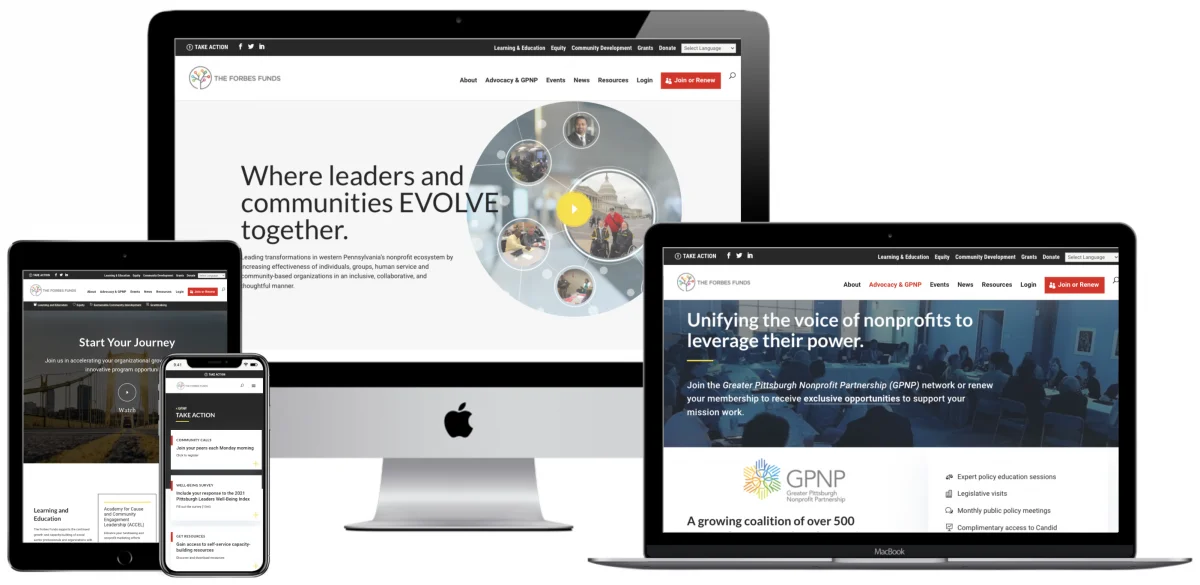More than half of all Google searches are now conducted on mobile phones, which means that it’s now more important than ever to ensure your website and every single page on your site is optimized for mobile, is user-friendly, and optimized for local search. These user-friendly basics are now vital (not just on the ‘nice to have list’) in light of Google’s switch to AI-first and Google’s search journeys (refresher on these later). Let’s explore how mobile search is changing and how you can stay abreast of changes–before your website is left in the dark ages.
Local SEO and local search
Local search is especially relevant for mobile. Essentially, when a user searches for a product or service, Google will not display the same results that you see on desktop; they will display results relevant to that user’s geographical location at that given time. Of course on desktop, Google has data (usually) about where the person searching lives (their general area) and will display relevant results, but a local search on mobile hones in on an exact location at the time. If, for example, you live in Atlanta and you’re searching for ice cream shops in your area, you’re likely to see what’s in your neighborhood. But if you venture down to Orlando and you’re on I-Drive, you’re likely to see the top results of the 25+ ice cream shops on International Drive itself (sorted by Google ranking and proximity to you) and then the 8+ pages of other ice cream shops in the vicinity.
What does that mean for you as a business owner? Well, you need to understand how to rank higher in local search–if this factor is relevant to your business–and figure out how to stay there. We wrote a mini-guide to local SEO here if you want a more in-depth look.
Local search is really important if you have a brick-and-mortar business you want people to visit: if you’re a doctor’s office, lawyer, plumber, merchant of some sort, restaurant, and so on. But it’s less important for businesses who sell online services: e-commerce, web design, digital marketing (unless you want people to visit your office), businesses with private locations, and so on. However, as a business owner, you need to be aware of local search to decide if you want to optimize your site for local search or not.
Google’s AI-first
AI-first is Google’s push towards more data collection and machine learning which tailors the search to the user. AI-first will allow businesses to optimize content for variables. Google now has an ad feature (discovery ads) that can A/B test several ads at once to figure out the ad that targets your audience, providing the best ROI. Some of these AI-first features you may have noticed are if you have a Gmail account and you’ve seen predictive typing (smart reply). We wrote a piece on AI-first here if you want to explore further. Google’s overall vision is, “we’re conducting research that advances the state-of-the-art in the field, applying AI to products and to new domains, and developing tools to ensure that everyone can access AI.” In other words, they see AI as improving user’s lives by allowing AI to tailor data to the specific user all the time so you see only content that you want to see, that’s relevant to you.
There’s no point (per se) weighing in on the “morality” or “implications” of Google’s shift. Google is ubiquitous and it’s a data-collecting and information-organizing machine. It’s practically impossible to live without a digital footprint and if you can’t beat ‘em join ‘em, so they say. As a business owner, it’s important to be aware that technology is shifting to this hyper-data-collection and it’s best to prepare your business to benefit from more tailored results in order to target your audience with the right messaging and the right product/service to improve their lives.
Google’s search journeys
In Google’s March 2019 Core Update, Google introduced another layer of its features with Google’s search journeys. Now user intent and context are key to the results users will get both on mobile and on desktop. So, that whole local search thing, well, it might not be entirely relevant with the switch to context. If the searcher decided that every time they visited Orlando and went to I-Drive they went to Ginther’s Swirls Ice Cream shop, then Google might display that shop first even if another shop technically outranked it on Google’s local search or even geographical search.
As a recap, search journeys now mean that search results will display based on a number of factors including what you’ve searched in the past, what your search intention is (are you looking to research, to buy, find something nearby, or something else?), relevance to you, location (maybe), and other variables. Google will keep data points and activity cards to keep track of your searches to tailor your journey further to ensure that you always get the best search results every time you type something into that little search engine bar–whether on mobile or desktop. If you want to find out more about Google’s search journeys, see our piece here.
Contextual signals for personalization
Alright, so let’s build on these concepts further. Now, Google is adding another layer to tailor your search based on “contextual signals.” Here’s how Google uses contextual signals to personalize messages to mobile users. When you’re searching on mobile, Google will now factor in what they call “contextual signals” which are time of day, date of search, and the location of you and your mobile phone to allow for even better personalization–as well as all of those previously discussed factors such as keeping track of your past search journey, local SEO (if relevant), AI-first, mobile-first ranking, and so on.
Laying the foundations for mobile engagement and mobile ads
So, what’s the point of all this data collection to “help” users get the best search possible? Of course, it comes down to advertising and ROI. But before you can provide the best experience, you have to ensure that all participants have the right foundations.
All of this means that your content needs to be built to accommodate a small screen size, which means designing for mobile-first and possibly even having your website optimized for voice search as well as accessibility, all of which will show Google that you’re relevant and user-friendly. Google even notes that prioritizing mobile speed is a good place to spend your upcoming marketing dollars.
Once you have mobile-friendliness and speed, you need to optimize any App and Play Store listings (if your business has an app), then get the tracking right. You’ll also need to understand the difference between application installs versus engagement. Engagement is key to ROI. After that, you can get more out of your mobile advertisements.
As an example, Google worked with Red Lobster to discover how contextual signals and mobile ads could drive customers to local stores. Red Lobster used ‘Google’s store visits metric’ to test its mobile campaign. They discovered that users who saw a Red Lobster ad on their mobile devices were 31% more likely to go to the restaurant than those who did not see an ad and that ad suggestion carried over to the next day too. 17% of users were more likely to visit the restaurant the next day instead if they saw an ad. This example is a subtle use of subliminal messaging and persuasion that increased sales and generated ROI. How could you use these contextual advertising tactics for mobile in your upcoming campaigns?
The sales journey has changed
Google acknowledges that the customer journey used to be more linear and measurable. However, now it means experimenting and seeing what works. Google’s updates are hoping to make this experimentation more of a science than a wild guess, but you still have to lay the foundation. With so many media touchpoints and multiple channels, marketers cannot take a narrow view of measurement and success. Marketers should embrace metrics but understand that it’s no longer a case of “spend so much on PPC here to generate specific returns” and that means KPIs have shifted too.
“Brands must approach measurement from a test-and-learn perspective and shift their focus from individual channel per-click or per-acquisition to overall business KPIs. … Only then will they be able to understand real-time performance in the macro terms of business results, as well as adjust those strategies in real-time for maximum impact.”
-John Grudnowski, CEO of the Minneapolis-based digital agency FRWD.
Google is asking everyone to up their game. The mix-up will force content-mill businesses, spammy links out of the court and allow for businesses with best practices to shine. That means it’s important to follow Google’s best practice when it comes to web design, marketing, SEO, and other factors.
Capturing engagement with tailored apps and websites
Everything is about personalization. Apps and websites now need to be tailored to users who operate them. You have to understand the context of your user’s journeys to be able to tailor that experience, which means understanding your audience now more than ever–or figuring out what you want your target audience to be and how to capture that audience. Being able to use local signals can improve your business since data noted that customers are more likely to purchase from companies who customized their mobile sites and apps to location.
Google as an example uses their app to detect when people are traveling and where they are traveling to if they are at an airport. They then tailored their ads to focus on travel tips, points of interest, and landmarks, providing relevant and helpful information to the user. More specifically, Google ran an ad to those in San Francisco asking questions like “How long is the Golden Gate Bridge?” The ad was locally-relevant and specific to the searcher and they found that the campaign worked–it increased daily active users by 85%, compared to a control group.
If you can add customization to your apps and web experience, tailoring the content and the ads, you can increase engagement, your return on investment, and bottom-line sales.
Tailor your user’s experience
To tailor the experience of your users you need to categorize your audience and figure out what in your product or service area would be important to them. Google, for example, targeted parents in their Google Photos app in an ad that read: “The best moments only happen once.” The purpose of the ad was to highlight their “free up” space feature. How many people go to take a photo and have to delete a bunch of old photos? Well, Google found that many people didn’t know that Google had a feature that allowed users to delete any photos backed up on their app to save space in their phone memory. They also found that the feature was buried in settings so they sought to make it more prominent and then generated an ad campaign to allow people to use the feature more. Google used their new ad’s feature where they generated dozens of versions of the ad and programmatically delivered them to generate the best ad–the one that worked. The campaign allowed a 9% upswing in brand awareness and a 6% lift in features awareness. Can you think of a service that your users might not be aware of and how you can promote it?
Google also notes that desktop and laptop searches provide a very narrow and limited view of what a user does in their daily life; however, a mobile phone is a constant in people’s lives. People might use Google maps, use planning tools, research to inform purchases, search for a local place to get lunch, and so much more which allows businesses to understand their customers’ routines. That means more targeted content and more compelling messages.
Currently, Google is exploring data using location, time, and app targeting, but they hope to explore device model, operating system, Wi-Fi connectivity, mobile carrier, and other factors to gather more relevant data in the future.
The takeaways
Alright, so if you made it to the end, that’s a lot of new information to digest! There is so much changing at Google that you need to keep on track to get ahead. Old marketing tactics are being phased out and it’s all about using the data you have on your customer base to tailor their experience to be the most helpful possible. But before any of that can happen you have to have the basic facets in place: prioritize mobile-first, voice-search, accessibility, and SEO. Need help figuring all of this stuff out? Get in touch if you want to talk about website improvements. We are here to help you.

Elaine Frieman holds a Master’s Degree and is a UK-based professional editor, educational writer, and former marketing agency content writer where she wrote articles for disparate clients using SEO best practice. She enjoys reading, writing, walking in the countryside, traveling, spending time with other people’s cats, and going for afternoon tea.

